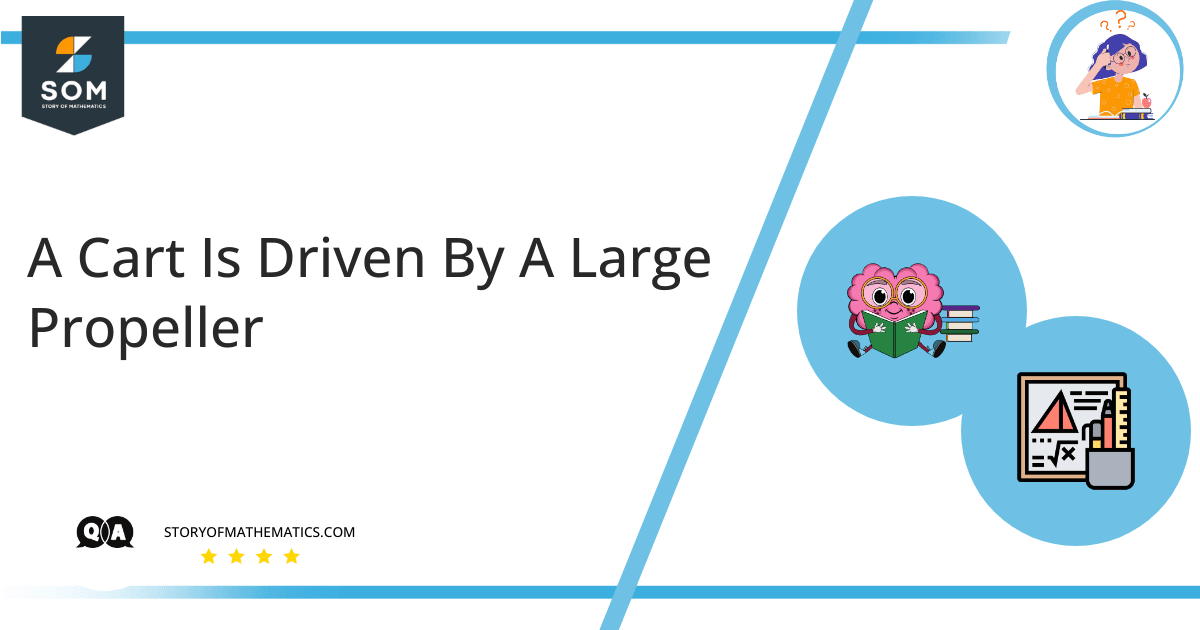
The question aims to find the acceleration of the cart with initial speed vo=5 m.s^(-1). The term acceleration is defined as the rate of change of an object’s velocity with respect to time. Accelerations are normally vector quantities (in that they have magnitude and direction). The orientation of an object’s acceleration is represented by the orientation of the net force acting on that object. The magnitude of the object’s acceleration, as described by Newton’s second law, is the combined effect of two causes:
- Net balance of all the external forces acting on that object– the magnitude is directly proportional to that resulting resultant force;
- Weight of that object, depending on the materials it is made of- size is inversely proportional to the object’s mass.
The system international units of acceleration is meter per second squared $(m.s^{-2})$.
For example, when a car starts from rest (zero speed, in an inertial frame of reference) and travels in a straight line with increasing speed, it accelerates in the direction of travel. If the car turns, it will accelerate in a new direction and change its motion vector.
The acceleration of the car in its current direction of motion is termed linear (or tangential in circular motions) acceleration, the reaction to which is felt by the passengers on board as a force pushing them back into the seats of the car. When the direction is changing, the applied acceleration is called radial (or centripetal in circular motions) acceleration; the reaction passengers feel as centrifugal force.
Expert Answer
Using the equation of motion equation:
\[v^{2}=v_{o}^{2}+2ax\]
For acceleration:
\[a=\dfrac{v^{2}-v_{o}^{2}}{2x}\]
The initial speed of the cart is $v_{o}=5 m.s^{-1}$ at $x=0$, reaches maximum displacement at $x=12.5m$, at this petition, the cart starts to decelerate, the velocity is zero $v=0$ at this point because the cart must stop for a moment before the cart changes its direction.
Plug the values to find the acceleration as:
\[a=\dfrac{0-(5m.s^{-1})^{2}}{2(12.5m)}\]
\[=-1 m.s^{-2}\]
\[a=-1 m.s^{-2}\]
The acceleration is $-1 m.s^{-2}$.
Numerical Result
The acceleration of the cart with the initial speed $v_{0}=5 m.s^{-1}$ at position $x=0$ is given as $a=-1 m.s^{-2}$.
Example
The cart is powered by a large propeller or fan that can accelerate or decelerate the cart. The carriage starts at the position with an initial speed $v_{0}=10 m.s^{-1}$ and constant acceleration due to the fan. The direction to the right is positive. The carriage reaches the maximum position $x=15 m$, where it starts to move in the negative direction. Find the acceleration of the cart.
Using the equation of motion equation:
\[v^{2}=v_{o}^{2}+2ax\]
For acceleration:
\[a=\dfrac{v^{2}-v_{o}^{2}}{2x}\]
The initial speed of the cart is $v_{o}=10 m.s^{-1}$ at $x=0$, reaches maximum displacement at $x=15m$, at this petition, the cart starts to decelerate, the velocity is zero $v=0$ at this point because the cart must stop for a moment before the cart changes its direction.
Plug the values to find the acceleration as:
\[a=\dfrac{0-(10m.s^{-1})^{2}}{2(15m)}\]
\[=-3.33 m.s^{-2}\]
\[a=-3.33 m.s^{-2}\]
The acceleration is $-3.33 m.s^{-2}$.
The acceleration of the cart with the initial speed $v_{0}=10 m.s^{-1}$ at position $x=0$ is given as $a=-3.33 m.s^{-2}$.
